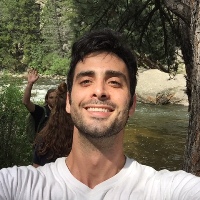I stood at the back of the open SUV. The sound recordist hooked the mic pack onto my belt and began to thread the wire around and up my shirt.
I asked her about the two tattoos on her arm: a set of paw prints and a colorful cat face. She paused and her eyes met mine. Tears began to well up over her mascara and thick eyeliner.
“The face is of Whiskers. I had her for 20 years; she died five years ago. The paw prints were Molly’s. She tragically died three years ago at the age of five. They were the loves of my life and I cry over them every day.” She hurriedly wiped the tears away and taped the microphone in place to my chest.
I wandered the set, bemoaning the state of this poor woman. All these years later, and she was still grieving the loss of those cats. By our societal standard, it seemed like a rather extreme response to the deaths of a few felines, but I could empathize with her pain.
Learning to let go is not a skill set we are taught in America. When a loved one dies, when we fail an exam, when we lose out on that job we had tried so hard to attain, what do we do to heal and move on? Society gives us no clear answers.
Drugs, sex, and alcohol are all popular choices. Avoidance is another. Some individuals recommend jumping into another activity to displace the feelings of sorrow. While some of these options might work moderately well in the short term, it never roots out the underlying trauma.
In Eastern meditative traditions, there exists a word called samskara, which roughly translates to mean “impression.” From the meditative perspective, every event we have in our lives leaves an invisible, indelible impression on our psyche. As we age, more and more impressions are accumulated. These samskaras are almost like patches of crystallization where there was once free flow of energy. This is why people sometimes seem like they’re becoming hard, dry, and constricted as they age. Their impressions are catching up to them, and they are losing the suppleness and juiciness of their younger and less rigid selves.
Fortunately, meditation teaches us that this process can be reversed.
Here’s the technique you can use: sit silently, take a few deep breaths, and redirect your focus inside. Notice the subtleties of how you’re breathing; notice what you’re feeling. After some moments in stillness, you will likely begin to feel places of pain, holding, or stagnation. It may or may not be associated with a physical location in the body; it can be more vague and decentralized. Gently, bring your awareness into that area of restriction and then take a deep breath into it and invite your prana (or life-force associated with the breath) to break it down. And then do that over and over. Breathe into the tightness and ask it to let go.
To me, the experience often feels like a complex knot being untied or an ice rock melting in a hot bath. Breath by breath, with a quiet intention, we can slowly dissolve our samskaras.
Through this technique we can consciously choose to heal old hurts, let go of past traumas, and etch out samskaras. It’s a process that happens gradually over time, where some patterns erase themselves in minutes, while others take decades. It has been, however, the only way that has provided lasting and real results for me and my well-being.
As an actor, I can get rejected upwards of five times per week. There have been periods as long as nine months where I didn’t receive a single “yes.” While my frequency of acceptances have been much higher as of late, this is still a lifestyle that accumulates a truckload of psychic hurts. This constant stream of disappointment has forced me to become good at this process.
We all have hurts. We all have experiences we need to surrender. It’s our choice, however, how we handle them.
Life gives everyone challenges to overcome. The glorious decision is whether we use the pain to grow and open more deeply than before, or shut down and gradually become a husk of the vibrant being we once were. We get to choose whether we become more alive each day or slowly die, moment by moment. If we can use the breath to let go, the former becomes a delightful possibility.
Author: Kaelan Strouse
Editor: Catherine Monkman
Image: Trevor Ellestad/Flickr







Read 1 comment and reply